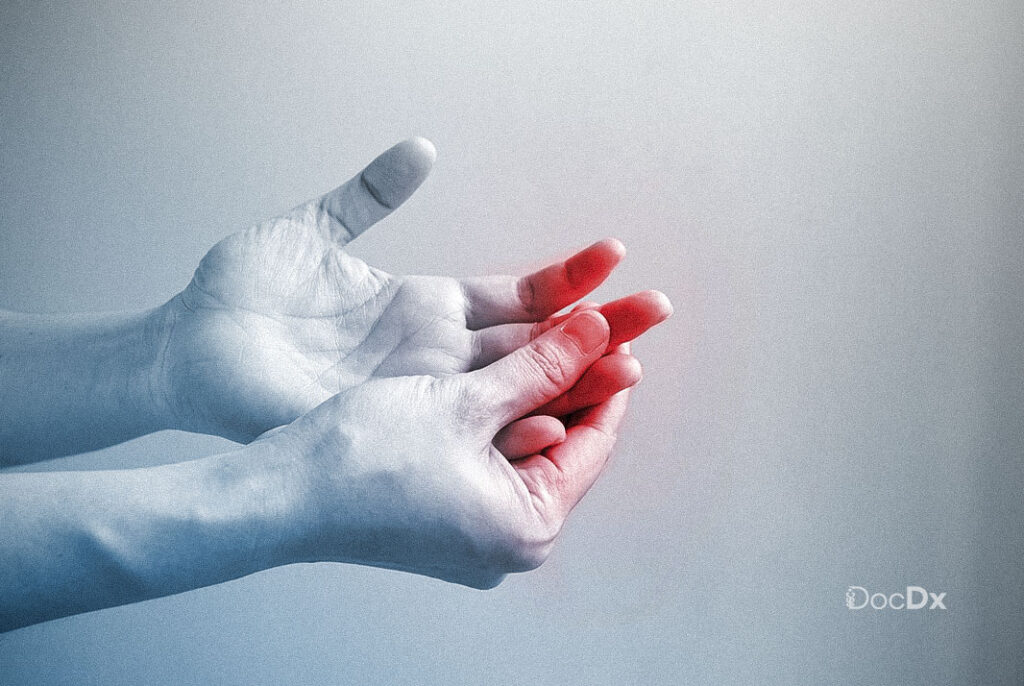Arthritis is a common condition that affects millions of people worldwide, causing pain, stiffness, and swelling in the joints. But did you know that arthritis isn’t a single disease? There are over 100 different types of arthritis, each with its own unique set of causes, symptoms, and treatment options. In this blog post, we’ll dive into the most common types of arthritis, how they differ, and what treatment options are available to help manage this condition.
What is Arthritis?
Arthritis is essentially an inflammation of the joints. It can occur in any joint in the body, and its severity can range from mild discomfort to severe pain and immobility. The two most common forms of arthritis are osteoarthritis and rheumatoid arthritis, but there are many other types that people may not be aware of.
1. Osteoarthritis: The “Wear and Tear” Arthritis
Osteoarthritis (OA) is one of the most common types of arthritis, often referred to as the “wear and tear” disease. It occurs when the protective cartilage that cushions the ends of the bones wears down over time. As the cartilage deteriorates, bones can rub against each other, causing pain, swelling, and stiffness.
Symptoms of Osteoarthritis
- Joint pain, especially after movement
- Stiffness in the morning or after resting
- Loss of flexibility
- A grating sensation or popping sound when moving the joint
Treatment Options
Managing osteoarthritis involves lifestyle changes, physical therapy, medications, and in severe cases, surgery. For those living in Rockville, MD, accessing specialized care through the Arthritis Treatment Center can provide targeted therapies to manage osteoarthritis effectively.
2. Rheumatoid Arthritis: The Autoimmune Disease
Rheumatoid arthritis (RA) is an autoimmune condition where the body’s immune system mistakenly attacks the lining of the joints, causing inflammation and joint damage. Unlike osteoarthritis, which is caused by wear and tear, RA can affect multiple joints simultaneously and may lead to more severe long-term damage if not treated.
Symptoms of Rheumatoid Arthritis
- Swollen, tender joints
- Fatigue and fever
- Joint stiffness, particularly in the morning
- Loss of joint function over time
Treatment Options
RA requires early diagnosis and aggressive treatment. Medications such as disease-modifying antirheumatic drugs (DMARDs) and biologics can help slow the progression of the disease. Physical therapy and lifestyle adjustments also play a crucial role in managing RA symptoms.
3. Psoriatic Arthritis: Linked to Psoriasis
Psoriatic arthritis (PsA) affects people who have psoriasis, a skin condition characterized by red, scaly patches. This form of arthritis causes joint pain, swelling, and stiffness and can affect any part of the body, including the spine and fingertips.
Symptoms of Psoriatic Arthritis
- Swollen fingers and toes, resembling sausages (dactylitis)
- Foot pain, especially in the heels and soles
- Lower back pain
- Red, inflamed eyes (uveitis)
Treatment Options
Psoriatic arthritis treatments often include anti-inflammatory medications, immunosuppressants, and lifestyle changes to help reduce symptoms and improve joint function.
4. Gout: The “Rich Man’s Disease”
Gout is a type of arthritis caused by the accumulation of uric acid crystals in the joints. It typically affects the big toe but can occur in other joints like the ankles, knees, and hands. Gout flare-ups are often sudden and incredibly painful.
Symptoms of Gout
- Intense joint pain, often in the big toe
- Redness and swelling
- Lingering discomfort even after the pain subsides
- Limited range of motion in the affected joint
Treatment Options
Managing gout primarily involves dietary changes, such as reducing the intake of red meat and alcohol, alongside medications to reduce uric acid levels. Preventative care and regular check-ups are essential to avoid recurring attacks.
5. Ankylosing Spondylitis: Arthritis of the Spine
Ankylosing spondylitis (AS) is a type of inflammatory arthritis that primarily affects the spine, causing the vertebrae to fuse together over time. This can lead to a hunched posture and limited flexibility.
Symptoms of Ankylosing Spondylitis
- Chronic pain and stiffness in the lower back and hips
- Fatigue
- Restricted movement in the spine
- Pain that improves with activity but worsens with rest
Treatment Options
Treatment for AS includes medications to reduce inflammation, physical therapy to improve posture and flexibility, and lifestyle adjustments. In advanced cases, surgery may be necessary to improve mobility.
6. Juvenile Arthritis: Arthritis in Children
Juvenile arthritis (JA) is the umbrella term for several types of arthritis that affect children under the age of 16. It can cause joint pain, swelling, and stiffness, and in some cases, it may also affect the child’s eyes, skin, or gastrointestinal tract.
Symptoms of Juvenile Arthritis
- Persistent joint pain and swelling
- Fatigue and fever
- Difficulty moving the affected joints
- Growth problems in severe cases
Treatment Options
Juvenile arthritis is treated with a combination of medications, physical therapy, and regular monitoring by healthcare professionals. Early diagnosis is crucial to prevent long-term joint damage.
The Importance of Early Diagnosis and Treatment
No matter which types of arthritis you or a loved one may be dealing with, early diagnosis and appropriate treatment are key to managing symptoms and improving quality of life. Access to specialized care, such as the services provided by the Arthritis Treatment Center in Rockville, MD, can make a significant difference in controlling pain and maintaining joint function.
Managing Arthritis: Lifestyle Tips
In addition to medical treatments, there are several lifestyle changes you can implement to help manage arthritis symptoms:
1. Stay Active
Regular exercise is essential for keeping joints flexible and reducing pain. Low-impact activities like swimming, walking, and yoga are excellent choices for people with arthritis.
2. Maintain a Healthy Diet
Eating a balanced diet rich in anti-inflammatory foods, such as fruits, vegetables, and omega-3 fatty acids, can help reduce inflammation and improve joint health.
3. Manage Your Weight
Carrying excess weight puts added stress on your joints, especially in the knees, hips, and spine. Losing even a small amount of weight can alleviate arthritis symptoms and improve mobility.
4. Use Assistive Devices
Assistive devices, such as braces, splints, or canes, can help reduce strain on your joints and make daily tasks easier to manage.
5. Practice Joint Protection Techniques
Learning how to protect your joints from unnecessary strain is crucial for managing arthritis. This might involve using proper body mechanics, pacing activities, and avoiding repetitive motions that could exacerbate joint pain.
Conclusion
Understanding the different types of arthritis is the first step toward managing the condition effectively. Whether you’re dealing with osteoarthritis, rheumatoid arthritis, or any other type, early intervention and comprehensive care are essential. If you’re in need of specialized treatment, the Arthritis Treatment Center in Rockville, MD offers a range of services to help you manage your symptoms and improve your quality of life.



